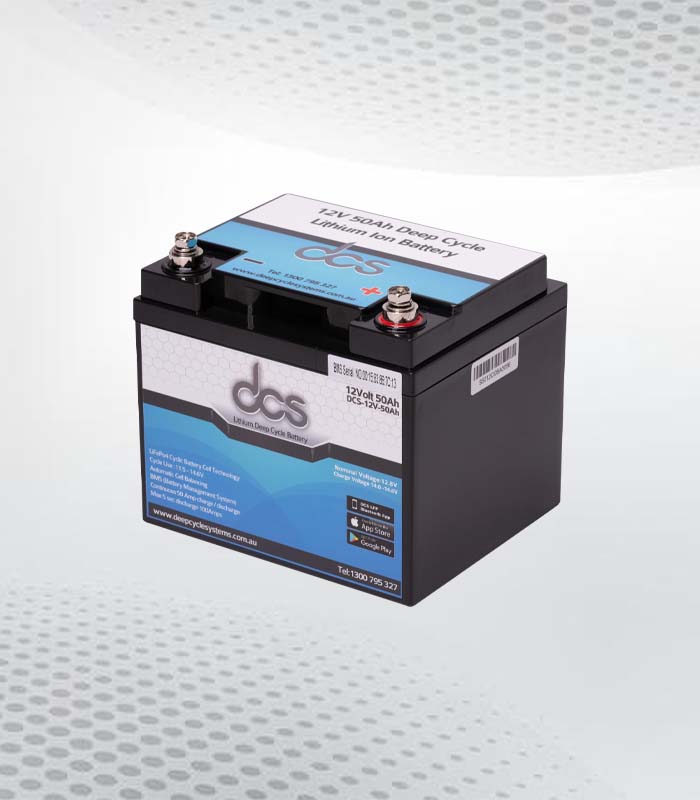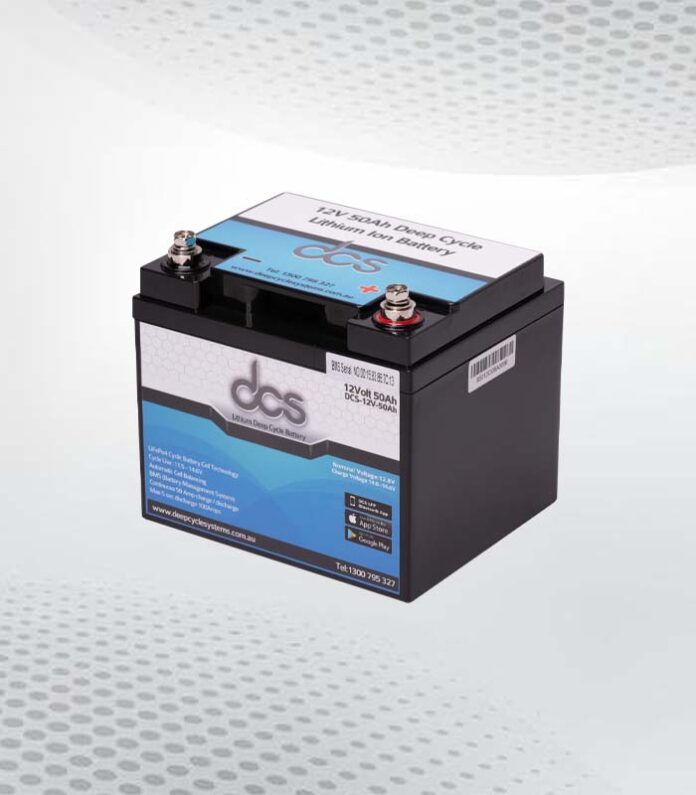Deep Cycle Lead Acid Battery, key players in energy storage, are on the cusp of a dynamic future. As we explore their evolving landscapes, let’s delve into the unique aspects of both flooded and sealed types, the environmental factors at play, and how innovation and market trends shape the batteries’ future.
Deep Cycle Lead Acid Batteries: An Overview
Deep-cycle lead-acid batteries operate as silent powerhouses at the heart of many energy systems. These workhorses are purpose-built to endure numerous discharge and recharge cycles, far outpacing their shallow cycle counterparts.
Commonly seen in renewable energy systems, electric vehicles, and emergency power supplies, they come in two variants: flooded and sealed. While each type sports a unique structure and maintenance requirements, they unite to deliver steady, dependable power. The flooded variant, a tried-and-true choice, couples cost-effectiveness with durability.
On the other hand, the sealed version, a modern response to user needs, boasts low maintenance and a spill-proof design. As we embark on this journey to understand these batteries better, let’s delve deeper into their unique characteristics, contributions to our energy needs, and how they’re poised for future growth.
Future of Flooded Lead Acid Deep Cycle Battery
As we look ahead, the horizon for traditional Flooded Lead Acid Deep Cycle Battery is illuminated by prospects of continuous refinement. Beloved for their cost-effectiveness and long-lasting reliability, these stalwarts are being revamped for the modern era. Enhancements are underway to increase their energy density and cycle life, bolstering their sturdy reputation.
These improvements hold robust potential to elevate energy storage systems, especially in off-grid and renewable applications. From suburban homes harnessing solar power to remote cabins using wind energy, the future of these batteries will be instrumental in lighting up corners far and wide. This perpetual evolution underscores a simple truth – while the flooded lead acid deep cycle battery may be a long-standing invention, its transformation journey is just beginning.
The Rise of Sealed Lead Acid Deep Cycle Battery
Sealed Lead Acid Deep Cycle Battery is beginning to turn heads with their user-friendly, low-maintenance features. Crafted with a spill-proof design, they’ve been nudging their way into the spotlight, ensuring a safe, efficient, and practical solution for power storage needs. These batteries take giant leaps forward as we progress into the 21st century.
Groundbreaking advancements in material science and technological innovation are crafting a promising path for these batteries. These developments offer improved safety measures, amplified energy efficiency, and streamlined integration into various power systems.
The sealed nature of these batteries eliminates the need for regular topping-up, reducing maintenance and offering a hassle-free experience to users. Their journey into the future, bolstered by rapid technological advancements, indicates a growth trajectory poised to leave a significant mark on the energy storage landscape. Watch out; the sealed lead acid deep cycle battery is ready to rise!
 Environmental Considerations for the Future of Deep Cycle Batteries
Environmental Considerations for the Future of Deep Cycle Batteries
The journey towards the future of deep-cycle lead acid batteries isn’t just about technological innovation; it’s also closely tied to environmental stewardship. As the world intensifies its focus on sustainable solutions, these batteries, too, must answer the clarion call for greener practices. A critical aspect of their evolution will be building and improving upon recycling infrastructures, thus ensuring that spent batteries don’t end up in landfills but are instead given a new lease of life.
Further, manufacturers strive to minimize their carbon footprint through energy-efficient manufacturing processes and reducing hazardous emissions. The potential also exists to explore lead alternatives to decrease environmental impact.
These eco-friendly considerations are not mere checkboxes but crucial stepping stones as we move towards a sustainable future for deep-cycle batteries. As these batteries continue to evolve, their role in powering our world must be intertwined with a commitment to protect and preserve our environment.
Innovation and Technological Advancements
In the thrilling arena of innovation and technological advancements, deep-cycle lead acid batteries are finding themselves at the forefront. The tech revolution is ushering in an era where these reliable powerhouses are set to become smarter, more efficient, and even more robust. The key lies in the groundbreaking progress in smart charging systems, nanotechnology, and state-of-the-art electrolyte formulations.
Imagine deep-cycle batteries where smart charging systems optimize every recharge cycle, enhancing battery longevity and performance. Then, envision advancements in nanotechnology creating batteries with unprecedented energy densities. Top it off with innovative electrolyte formulations to boost overall battery efficiency, and you’ve got an electric future!
The fascinating part? This isn’t some distant sci-fi scenario; these developments are happening here and now. As we navigate the age of rapid technological progress, deep-cycle lead acid batteries aren’t just keeping pace but leading the charge. Hold on tight because the race towards the future of these batteries promises to be thrilling!
The Market Outlook for Flooded Deep Cycle Battery
The realm of renewable energy and electric vehicles is witnessing an unprecedented surge. Guess whose standing front and center to meet this burgeoning demand? Flooded Deep Cycle Battery. Their tenacity, reliable performance, and pocket-friendly nature make them a compelling choice for many.
Market analysts see a bright future teeming with potential growth for these sturdy powerhouses. The advent of sustainable power and an increased emphasis on electric mobility solutions bode well for their market prospects. Granted, the stage is shared with rival battery technologies, but the deep cycle lead acid battery’s unrivalled track record gives it a firm footing.
Amidst the ebb and flow of market trends, these batteries continue to hold their ground, promising a future powered by their steadfast resilience. As we stride into an era of sustainable and efficient energy solutions, Flooded Deep Cycle Battery are all set to shine!
Challenges and Opportunities in Deep Cycle Battery Manufacturing
In the bustling world of deep cycle battery production, challenges and opportunities dance hand in hand. Maintaining a consistent output quality can sometimes feel like a high-wire act, especially with the cost factor stirred into the mix due to fluctuating lead prices. Yet, with challenges come ripe opportunities ready for the picking. Take, for instance, the exciting prospect of integrating more automation into manufacturing: such a shift streamlines operations and promises to boost production efficiency.
Moreover, the race to increase energy density opens the door for continual innovation, enhancing the power-per-pound ratio of these batteries. Let’s remember the allure of emerging markets, where the demand for dependable energy storage solutions is rising.
Like any good adventure, manufacturing deep-cycle batteries has many obstacles and rewards. But with a spirit of innovation and a drive for continual improvement, the journey will be one exciting ride.
Challenges Facing Deep Cycle Battery Development
The road to deep-cycle battery advancement has its bumps and bends. Addressing issues such as salvation, a common process that can lead to reduced battery life, is a priority in the quest for optimal performance. Likewise, creating sophisticated charging profiles to fit diverse operational conditions is a challenge that industry experts are keen to overcome.
Navigating through safety considerations also plays a significant role, as ensuring a safe operational environment under a range of conditions is paramount. Overcoming these challenges presents an exciting opportunity to bolster the battery’s longevity and performance substantially.
While the path to improvement may be demanding, it is through addressing these hurdles that we can fuel further evolution and innovation in deep-cycle battery development.
Charging for the Future: Smart Deep Cycle Battery Chargers
As we hurtle towards a future of sustainable energy solutions, smart chargers are paving the way for a revolution in the charging process of deep-cycle batteries. Imagine a device that doesn’t just recharge your battery but does it with panache! These smart chargers, armed with cutting-edge algorithms, are designed to optimize the charging process masterfully.
The result? A boost in battery performance, extended battery lifespan, and a significant reduction in energy consumption. By constantly adjusting to the battery’s needs and environmental conditions, these chargers ensure that each charging cycle is maximized for efficiency and longevity.
And it’s not just about power – smart chargers also add a layer of safety by preventing overcharging and other potential hazards. In this electrifying future, charging isn’t just a necessary routine but an opportunity for optimization and enhancement. Brace yourself because the smart charging revolution of deep cycle batteries is just starting!
Revolutionizing Deep Cycle Battery Chemistry
Hold on tight; the chemistry of deep-cycle batteries is going through a thrilling evolution. Pioneering advancements in lead alloys and sophisticated electrode designs are dramatically boosting these reliable powerhouses’ power density, longevity, and overall performance. Imagine the current deep cycle battery you know; now, picture it supercharged and operating at an unparalleled efficiency. That’s the revolution we’re talking about!
Through relentless research and out-of-the-box innovation, the deep cycle battery is not just keeping its place in the energy storage world; it’s setting the stage for unprecedented performance.
Yes, the landscape is changing, but amidst the flux, one thing remains certain: the deep cycle battery is here to stay and is ready to astound us with its energy-packed performance. Buckle up and get ready to witness a revolution in battery chemistry!
FAQs
You’ve got questions; we’ve got answers! Here are a few common queries:
**What’s the difference between a flooded and sealed deep cycle battery? **
Flooded batteries, a traditional choice, are cost-effective and durable but require regular maintenance. On the other hand, sealed batteries are modern versions with a spill-proof design and minimal maintenance requirements.
**How do smart chargers enhance the battery charging process? **
Smart chargers use advanced algorithms to optimize the charging process. They adjust to the battery’s needs and environmental conditions, enhancing battery performance and lifespan while reducing energy consumption.
**What are the environmental considerations for deep-cycle batteries? **
Promoting sustainable practices, these batteries focus on building robust recycling infrastructures, minimizing carbon footprints, and exploring lead alternatives. Manufacturers are also committed to energy-efficient production processes and reducing harmful emissions
Conclusion
Deep cycle lead acid batteries hold immense potential in an era marked by burgeonideep-cycledemands and a quest for sustainable solutions. Whether flooded or sealed, these silent powerhouses have proven their mettle in providing reliable and efficient energy storage. Their future, punctuated with exciting advancements in technology and chemistry, is promising. By addressing inherent challenges and constantly refining their performance, these batteries push the innovation envelope. Let’s remember their pivotal role in environmental stewardship, paving the way for a sustainable future in energy storage
| Other Good Articles to Read |
| Niche Blogs Connect |
| Blogs 97 |
| Blog Stitution |
| Blogs Unplugged |
| Blogs Cotch Rouge |
| Blog Signatr |
| Blog Sintonias |
| Blog Zilla |
| Consumer Forums |
| Finance Forums |
| G Blogs |
| Too Blog |

